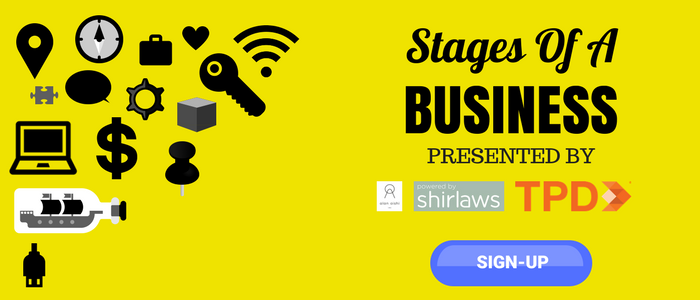%20(1).png?width=608&name=landingpage-banner-webinar-employee-onboarding-program%20(1)%20(1).png)
TPD collaborated with PandaDoc, a document automation tool, to look at the impact an effective employee onboarding program can have on your company. During the July 19, 2017 webinar, attendees learned the impact of what an onboarding process can have on company culture, revenue, and some best practices. (If you missed it, watch here) However, this topic has generated quite a lot of buzz, so we had speakers Andrea Duke and Neha Siddana answer some of the most pressing questions that came out of the online workshop:
How do you solicit satisfaction feedback during the onboarding program?
Andrea Duke: There are many ways that you can solicit satisfaction feedback, including: surveys at critical points at the onboarding process, and planned feedback sessions and informal casual conversations.
I’m a fan of having a combination of formal and informal ways to receive feedback. Structured, formal stages will ensure that you can record and even measure satisfaction. Having an open door and having others on your onboarding team check in with employees encourages those lines of communication to open up.
Find to score and track. This can be as simple as a score out of ten with how satisfied they are with onboarding. You can conduct a net promoter score that asks “To what extent would you be likely to recommend your company as a place to work on a scale of one to ten?”. Ask for ratings for specific stages or activities in your onboarding.
It is important that the employee feels comfortable during feedback sessions. Have it in a private space and remove distractions. It’s great for the direct manager to ask for feedback and great for someone other than the manager to ask for feedback such as an HR professional or the manager’s manager.
With PandaDoc, when you send to the different stakeholders can they work on it simultaneously or does it get sent in a signing order (e.g. one person completed, then the next, etc)?
Neha Siddana: Signing orders are optional in PandaDoc. If all the stakeholders are part of one workspace they can work on it at the same time.
Our business is small and everyone is an "all hands on deck" employee. How do you communicate that as part of our culture without overwhelming the new hire during orientation?
AD: Socialization can starting during recruitment and your prospective candidate can meet future colleagues over coffee or lunch. I would also recommend hiring based on cultural fit. Take a look at a past webinar on Interviewing for Fit.
Give a head start while they are waiting for the first day of work to begin by providing the employee handbook and any company information that describes your history, strategy, vision, mission and values.
Put new employees in the driver's seat as much as possible so that they can choose their pace. You can do this by providing on demand resources (videos) and reference guides, make time for lots of questions and answers, focus on what’s most important for the first days on the job, providing refresher training/resources later to help them remember what they’ve learned, and assign a buddy/mentor.
I understand that it may take some time to set up a new employee once the templates are all complete. But how much time is dedicated to created these templates and how do we make sure they are worth it?
NS: PandaDoc has many in-built templates that can be used to make documents interactive and user-friendly with the help videos, pictures, colorful cover pages. I had the content and knowledge bank ready. So it took approx. half an hour to 1 hour to create the onboarding document.. It saved the time that I used to spend drafting emails and gathering information for each hire approx. half an hour/ hire. Results were seen in the form of reduced turnover, 100% new hire retention rate and excellent new hire feedback. The first 1 hour spent was worth it.
How can you measure the success of your onboarding program?
AD: Pick some metrics that would be meaningful to your organization. Perhaps that’s retention, turnover, engagement survey scores, department KPIs for customer service or productivity.
Also pick some micro metrics to measure different aspects of your onboarding experience such as ratings from employees at different stages, ratings on trainings, quizzes on the organizations. And anecdotal comments and feedback from managers and employees are great sources to figure out how to improve.
I work for a small recruiting company as an on-site manager and have about 100 employees under me and have a retention issue. I want to bring the idea to my president about switching out on-boarding process and get a new system. We use Avionte now and all hate it. But we would have to switch all of our current candidates from Avionte to a new program like PandaDoc is it an easy process to switch and something PandaDoc assist with or what's the best way to get all info from one program to the other. I know my President won't do it if it would cause too much of a headache.
NS: Headcount of 100 sure does require a very robust ATS and onboarding tool. PandaDoc cannot replace an ATS but you can look into integrating your ATS and PandaDoc so the data flows automatically. Most of the software companies including PandaDoc provide 1 time implementations services that could help build the integration and migrate your data. As far as Executive buy-in is concerned doing a cost benefit analysis could be helpful. Good thing with PandaDoc is that it can be used by all the departments and is not limited to HR.
AD: At TPD, we use JazzHR for recruiting and we use BambooHR for onboarding and other HR information management needs such as performance management and time and attendance management. Both programs have been implemented well. For our staffing division we use Hubspot and you can read more about our case study here.
Employees at our company are resistant to structure. We prefer to not have structure and remain agile. How can we approach onboarding in an unstructured way to still get the benefits we would see from structured onboarding?
AD: Just because there is some structure to onboarding doesn’t mean it has to be rigid. In fact, your onboarding process should still be flexible enough to allow for personalization so that it suits each new employee well.
If your organization is averse to structure, phrase your onboarding process as “guidelines”. There’s still room for creativity and personalization in many steps of the process. What these guidelines can provide are a road map to co-planning with your onboarding team and rough stages to make sure important learnings and conversations don’t get missed.
Filed under Expert Series

.png?width=2400&name=HQ%20TPD%20careers%20hero%20(1).png)




